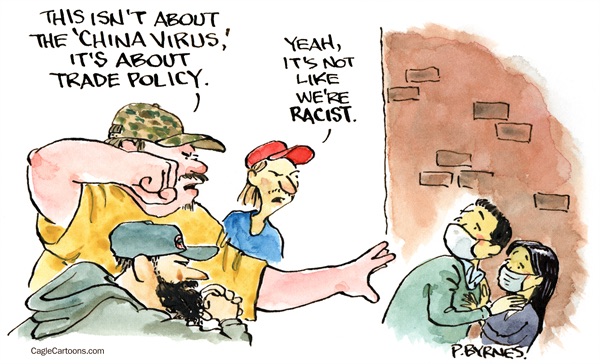A Long History of Anti-Asian Racism
The Responsibility to Mitigate Injustice Lies with All of Us

Racism again Asian Americans has a long and storied history, not just of individual acts of bigotry, but of injustices originated and propagated by state and federal government.
In the 1854 case People v Hall, the California Supreme Court ruled that Asians could not testify against a white person in court, effectively clearing the way for violent acts against Asians. In 1882, Congress passed the Chinese Exclusion Act, banning Chinese immigration for decades. In 1942, President Franklin D. Roosevelt signed an executive order calling for the incarceration of Japanese Americans, allowing for the creation of internment camps that housed thousands of Japanese Americans during World War II.
The recent swell of violent crimes against Asian Americans resonates with me because of my own experiences as a person of color. Growing up as a first generation Chinese American, I experienced racial bias and stereotyping firsthand. I wish I could say I am surprised that I still have these experiences today.
Since the COVID pandemic, there have been 3,800 reported incidents of anti-Asian hate, as reported by the Stop AAPI (Asian American Pacific Islander) Hate organization. This likely represents only a fraction of the number of hate incidents that actually occur, as Asian Americans are often reluctant to report crime due to language barriers, worries over immigration status, fear of retaliation, or simply not wanting to make trouble.
The more visceral hate incidents have become widely distributed in the media. These include a crime in January, when an 84-year-old man of Thai descent was shoved to the ground; he died two days later. In New York, a Chinese-American mother was spit at and called “Chinese virus” in February. On March 16, six Asian-American women (four of Korean descent) were murdered in a shooting spree in Atlanta. Violent acts continued even as the House Judiciary Committee held a rare hearing on anti-Asian discrimination and as Asian Americans rallied together in solidarity.
The Asian community is divided over the best measures to curb the violence, reflecting the heterogeneity of a group that encompasses dozens of ethnicities and multiple generations. Some call for lowering the bar for hate crime charges, toughening penalties, and boosting funding for police departments to investigate attacks.
Others oppose these proposals, saying more policing could harm their communities, inflame racial tensions, and disproportionately target minority communities that have long dealt with aggressive policing. Many local organizations are calling for interracial solidarity and solutions that help to heal tensions and move forward in ways that allow all ethnic communities to thrive. Individual reflection and awareness of one’s own implicit biases can be an eye-opening experience, even for the most progressive individual.
On a national level, Asian-American leaders are denouncing the anti-Chinese rhetoric espoused during the peak of the COVID pandemic. There is a push for cultural awareness education for those who hold public office and support for legislation addressing anti-Asian discrimination. Earlier this year, in a welcomed executive order supported by Vice President Harris, the first United States VP of Asian descent, President Biden acknowledged the role that the federal government played in perpetuating anti-Chinese sentiment during the pandemic. The memorandum provided guidance to the Justice Department on how to respond to the surge in anti-Asian incidents, including consultation with community leaders and organizations to ensure an understanding of the challenges faced by Asian-American communities. It also sought to expand data collection and public reporting of hate incidents against such individuals.
When I reflect on what I want my mixed-race children to understand about this time in history, when both a novel virus and anti-Asian sentiment were surging, I want them to know that xenophobia did not begin with COVID-19 and it will not end when the pandemic is over. Racism in all its forms, from the othering of interpersonal microaggressions to the structural entrenchment of systemic racism, will always exist. As a society, we must work together to mitigate the injustices. The responsibility lies with all of us, from the individual to the media to the highest levels of government.
Dr. Katherine Chung is a physician in Santa Barbara.



